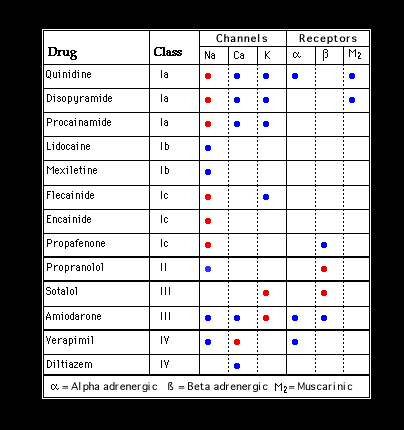Direct acting antiarrhythmic drugs such as procainamide, flecainide,verapamil and amiodarone, exert their primary effects on ionic channels. Others, such as the beta-adrenergic blocking agents influence adrenergic receptors. The table shown here is based on the construct of the “Scicilian Gambit” (Circulation 84: 1831,1991). It lists many of the direct acting drugs currently in use in the United States and their mechanism(s) of action. The numbers in the “Class” column identify the classification popularized by the British Pharmacololgist, Dr. E M Vaughan Williams in 1972.
The red dots indicate a large effect. The blue dots indicate a smaller effect

